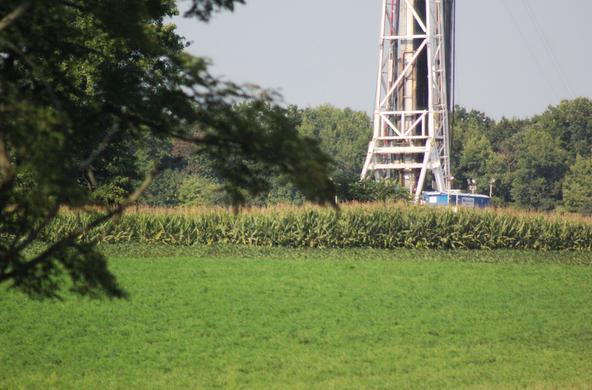WASHINGTON (AP) - New research is providing some of the first scientific evidence that a controversial gas drilling technique can contaminate drinking water.
The study published Monday found potentially dangerous concentrations of methane gas in water from wells near drilling sites in northeastern Pennsylvania, although not in central New York, where gas drilling is less extensive.
But in an unexpected finding, the team of Duke University scientists did not find any trace of the chemicals used in the hydraulic fracturing process in 68 wells tested in Pennsylvania and Otsego County in central New York.
In hydraulic fracturing, or fracking, water, sand and chemicals are injected underground to crack the rock and get natural gas to flow into a well. Critics of the technique have worried more about the chemicals since companies have refused to make public the proprietary blends used and some of the ingredients can be toxic.
On average, water from wells located less than a mile from drilling sites had 17 times more methane than water tested from wells farther away, according to the study published Monday in the Proceedings of the National Academy of Sciences.
Methane is not known to be toxic, but in high concentrations it can be explosive and cause unconsciousness and even death, since it displaces oxygen needed to breathe.
Of the 60 wells tested for methane gas, 14 had levels of methane within or above a hazard range set by the Department of Interior for gas seeping from coal mines - all but one of them near a gas well. In nine wells, concentrations were so high that the government would recommend immediate action to reduce the methane level.
Methane is released naturally by bacteria as they break down organic matter. The researchers' analysis shows that the type of methane in the wells with the highest concentrations is coming from deep in the earth, the same place tapped by companies in search of natural gas.
In the most severe case, a homeowner in Bradford County, Pa., who leased her property to a gas company, has so much methane coming out of her tap she can light her water on fire. A natural gas well is located 800 feet from her house.
"Not every homeowner within a kilometer (of a drilling site) will have high methane concentrations," said Stephen Osborn, a postdoctoral associate at Duke University's Center on Global Change. "If you are a homeowner within a kilometer, and our study shows this, I would be a little bit concerned."
What the study does not say is how exactly the methane is getting into drinking water sources, and what part of the drilling is potentially involved. While wells closer to drilling sites had more methane, most of the wells in the study - 85 percent - had some.
Industry groups on Monday faulted the research, saying it did not show that fracking itself was behind the methane contamination, nor did the researchers conduct before-and-after tests to prove the contamination occurred after drilling. The authors themselves suspect that the methane is likely flowing up the sides of the gas well - rather than down pathways created by hydraulic fracturing.
"The authors admit they have no baseline data at all, which makes it impossible to characterize the state of those water wells prior to recent development," said Chris Tucker, a spokesman for Energy in Depth, a national coalition of independent gas producers.
The industry also was critical of the paper's editor, William H. Schlesinger, who selected the study's outside reviewers. Schlesinger, a biogeochemist and president of the Cary Institute of Ecosystem Studies in Millbrook, N.Y, has supported moratoriums in New York on hydraulic fracturing permits until its effects are completely understood.
Gas drilling has expanded in Pennsylvania and other states where shale formations are thought to hold lots of natural gas, a clean-burning energy source. To get it, companies need to fracture the rock.
As the technique has proliferated, so too has concern among homeowners, and local, state and federal governments about its potential toll on underground drinking water sources which are unregulated and untested. Two federal agencies have launched their own studies, and the state of Pennsylvania - where numerous homeowners are suing drilling companies over water contamination - views methane as among the most serious risks of gas drilling.
In that state, an investigation into an explosion and fire at a house in December, and another at a home in February, is looking at natural gas drilling as the culprit. And a natural gas drilling company last year agreed to pay $4.1 million to 19 homeowners whose water was contaminated by methane gas, even though the company denies causing the pollution.
In Texas, the federal Environmental Protection Agency demanded that Range Resources of Fort Worth place monitors in two homes and provide two families with water after methane and other contaminants were detected in drinking water. But the state regulator recently said the EPA analysis was wrong.
Study participants in northeastern Pennsylvania hoped the research would help settle the debate.
Sherry Vargson's drinking water well in Bradford County had the highest levels of methane detected in the study. The bubbles of methane gas, which she describes as looking like Alka-Seltzer coming out of the tap, did not start until 14 months after the well was drilled.
The company who leased her property, Chesapeake Energy Corp., has bottled water delivered.
"I still think it can be done safely, but there are too many shortcuts being taken," she said.






